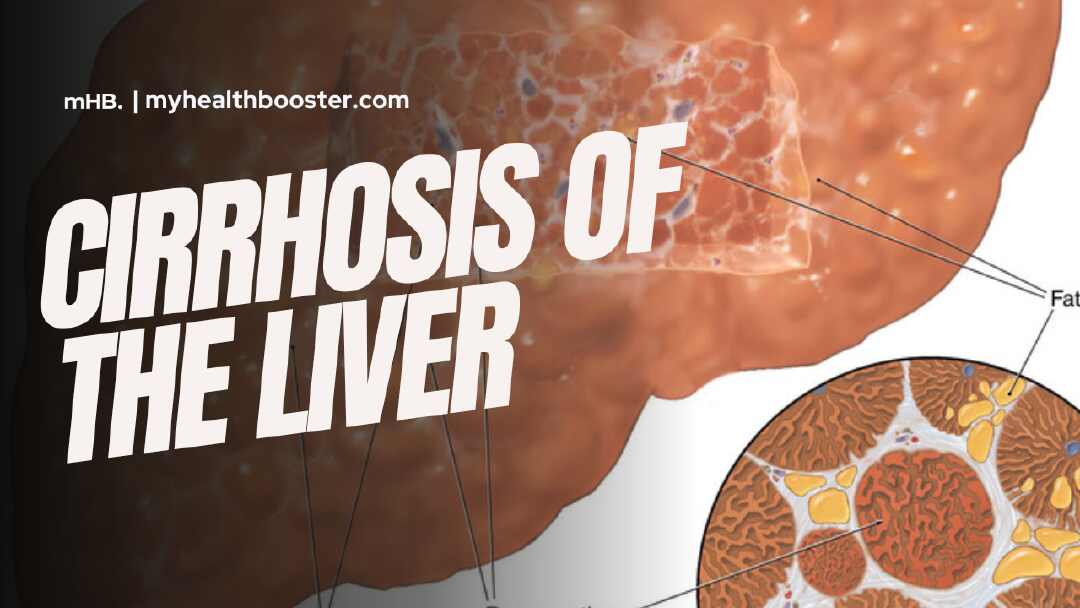Cirrhosis of the liver is a serious and progressive condition that affects millions of people worldwide. In this article, we’ll delve into the main causes of cirrhosis, explore common symptoms, and discuss the possibility of recovery.
What Causes Cirrhosis of the Liver?
Cirrhosis of the liver is primarily caused by long-term, continuous damage to the liver and may result from various conditions and factors. The leading causes include:
- Alcohol Abuse: Excessive and prolonged alcohol consumption is a major contributor to cirrhosis. The liver processes alcohol, and chronic alcohol abuse can scar liver tissue over time.
- Chronic Viral Hepatitis: Viral hepatitis infections, particularly hepatitis B, C, and D, can lead to cirrhosis if left untreated. These viruses can cause inflammation and damage to liver cells.
- Non-Alcoholic Fatty Liver Disease (NAFLD): NAFLD is often linked to obesity, insulin resistance, and metabolic syndrome. When fat accumulates in the liver, it can lead to inflammation and cirrhosis.
- Autoimmune Hepatitis: This is a rare condition where the immune system mistakenly attacks the liver, causing inflammation and, if left untreated, cirrhosis.
Symptoms of Cirrhosis of the Liver
Cirrhosis can be a silent disease in its early stages, with symptoms often appearing only when the liver damage is significant. Here are four common symptoms to watch for:
- Fatigue: Over time, cirrhosis can lead to decreased liver function, causing fatigue and a lack of energy.
- Jaundice: A yellowing of the skin and eyes occurs when the liver cannot effectively process bilirubin, a waste product from the breakdown of red blood cells.
- Swelling and Fluid Retention: Cirrhosis can cause fluid to build up in the abdomen (ascites) and legs (edema) due to impaired liver and kidney function.
- Easy Bruising and Bleeding: The liver produces proteins necessary for blood clotting. When the liver is damaged, clotting factors may decrease, leading to easy bruising and bleeding.
Additional Symptoms
In addition to the common symptoms mentioned above, cirrhosis can manifest in various ways. Two notable symptoms include:
- Portal Hypertension: As cirrhosis progresses, it can lead to increased pressure in the portal vein, causing symptoms such as enlarged veins in the esophagus (varices) and even gastrointestinal bleeding.
- Hepatic Encephalopathy: When the liver struggles to detoxify harmful substances in the blood, it can lead to cognitive changes, confusion, and in severe cases, coma.
Can a Person Recover from Cirrhosis?
Cirrhosis is considered irreversible; however, early intervention and lifestyle changes can significantly slow its progression and improve the quality of life. Here are some key points to consider regarding recovery:
- Alcohol Cessation: If alcohol abuse is the cause, stopping drinking is essential to prevent further damage and enhance liver function.
- Hepatitis Management: Managing chronic viral hepatitis through antiviral medications can halt or slow liver damage.
- Lifestyle Modifications: A healthy diet, weight management, and regular exercise can benefit individuals with cirrhosis, especially those with NAFLD.
- Medications: Medications may be prescribed to manage specific symptoms or complications, such as diuretics for fluid retention or lactulose for hepatic encephalopathy.
- Liver Transplant: In severe cases, a liver transplant may be the only option for recovery. Liver transplant procedures have a high success rate, but the availability of donor organs can be limited.
Conclusion
Cirrhosis of the liver is a progressive condition that requires prompt medical attention and lifestyle changes to manage effectively. Understanding the causes, recognizing symptoms, and seeking early intervention can make a significant difference in slowing the disease’s progression and improving the overall prognosis. If you suspect you or someone you know may have cirrhosis, consult a healthcare professional for a thorough evaluation and guidance on the most appropriate treatment and lifestyle adjustments.
